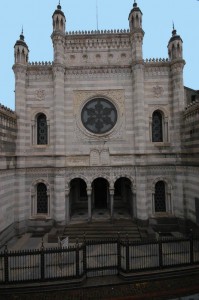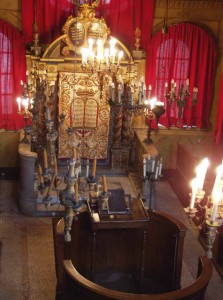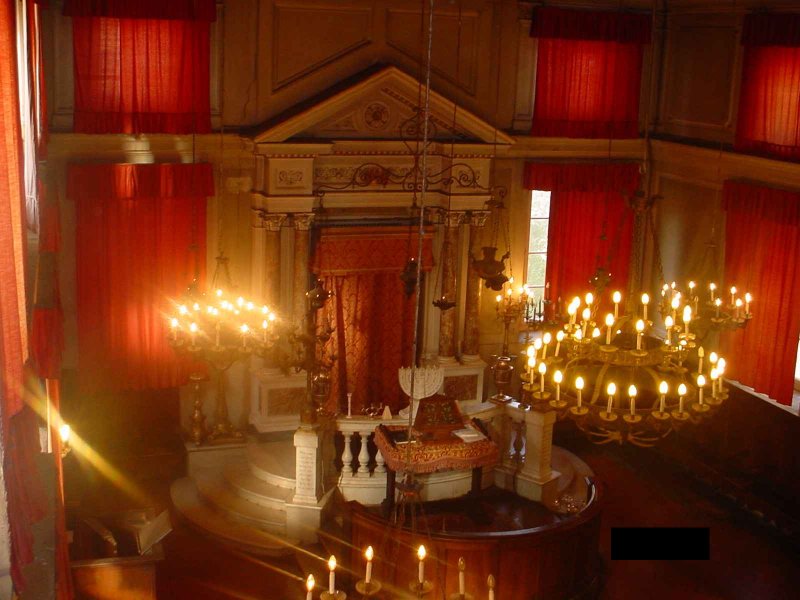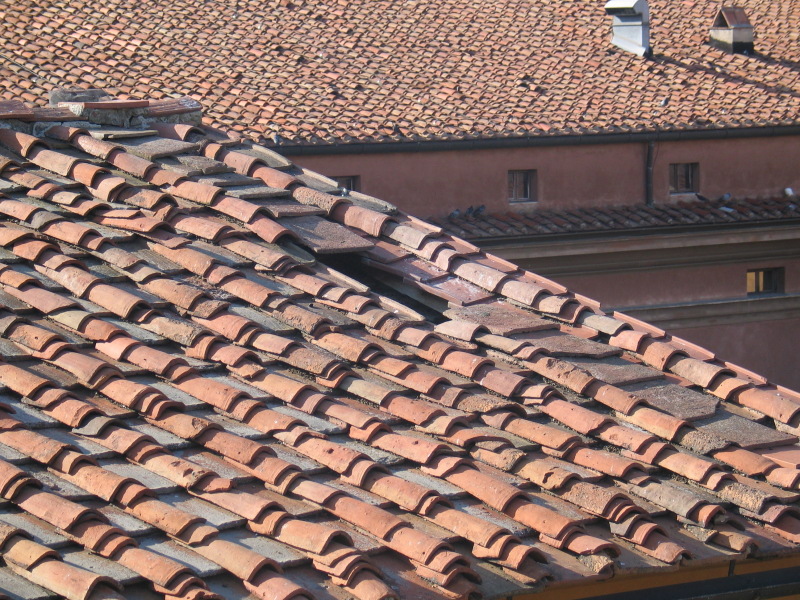
Photo: De Benedetti Cherasco 1547 Foundation
By Ruth Ellen Gruber
I've come across a new web site dedicated to the Jewish heritage of Cherasco, in northern Italy's Piedmont region, and in particular to its gemlike little synagogue, located in the heart of the one-time ghetto, which was reopened in 2006 after a full restoration. Dating from the 18th century, the synagogue is noted from its beautiful carved bimah, with spiral columns.
Much of the site's content is still only in Italian, though it looks as if the whole site will eventually have an English edition. Of particular interest are the photo galleries (see the Galleria Multimediale) which includes before and after images of the synagogue -- as well as a detailed photo documentation of the restoration process.
The site was established by the De Benedetti-Cherasco 1547 Foundation, which also sponsored the restoration.
The Foundation was established in 2002 to commemorate the engineer Gian Giacomo Debenedetti, who died in 1998 and "who dearly loved the city of Cherasco and worked to promote its image and its initiatives in Italy and abroad."
Its stated goals are also to:
Express gratitude to the city of Cherasco, that since 1547 has welcomed numerous Jewish families within its walls, including the De Benedetti family
Maintain cultural ties with France, in remembrance of the armistice signed at Cherasco between revolutionary France and the Kingdom of Sardinia on 28 April 1796, an event that resulted in the introduction of the values of the French Revolution and in the emancipation of the Jews of Cherasco to the city
Develop ties with the country of Israel, initiated by the through the twinning of Cherasco with the city of Qiryat Gat
Guided tours of the synagogue are offered various Sunday afternoons in coming months -- June 14, 21, 28 ; August 30; September 6 and 13; October 18 and 25; and November 1. Private visits can be arranged during the week, by reservation.
Contact:
Codess Cultura Società Cooperativa
via S. Anselmo 6 10125 - Torino
Tel. +39 011 6699725
Fax +39 011 6508190
www.codesscultura.it


















